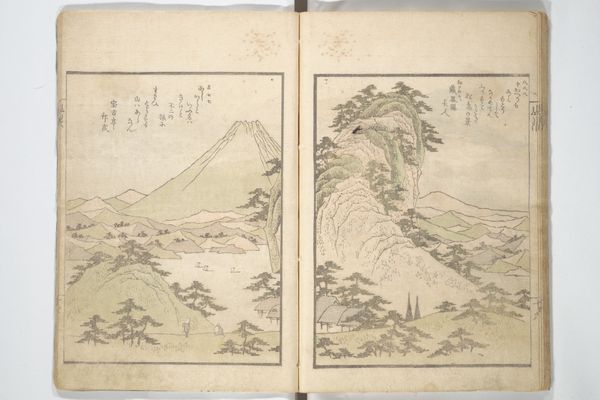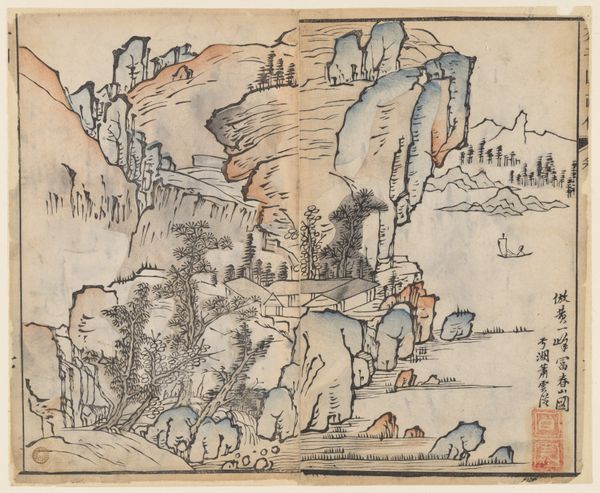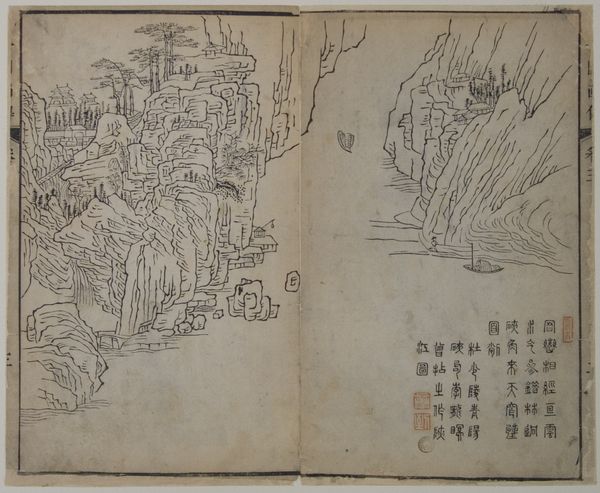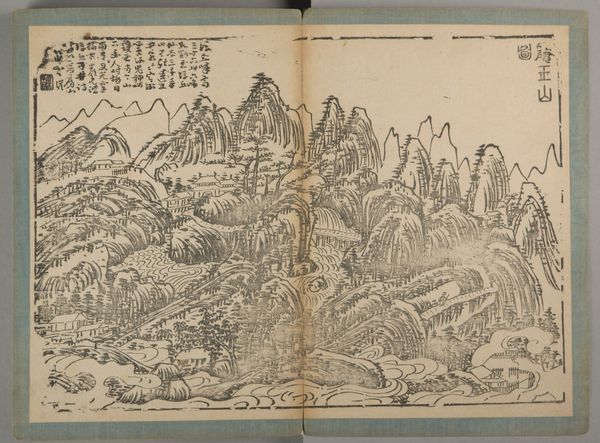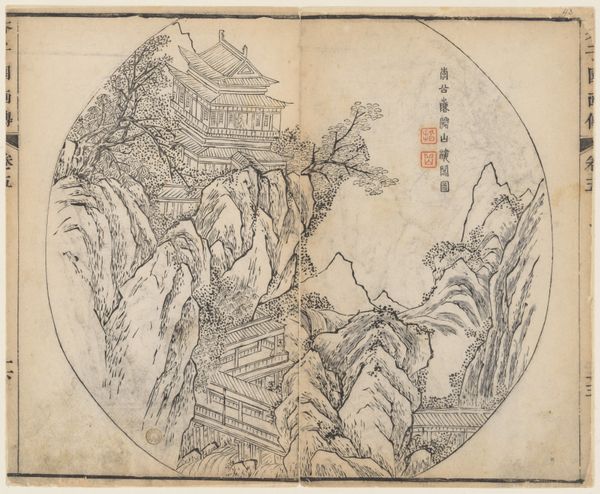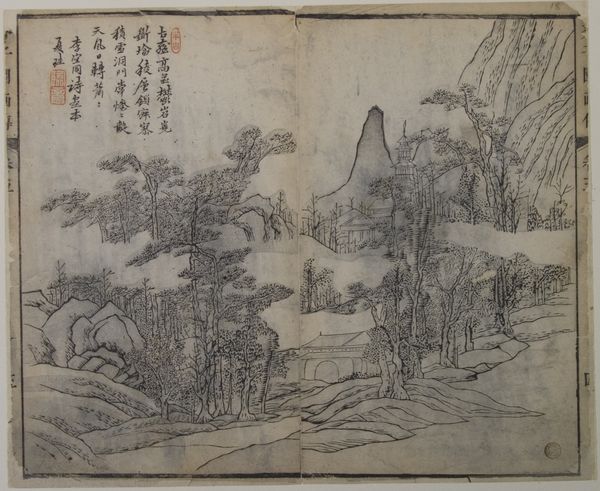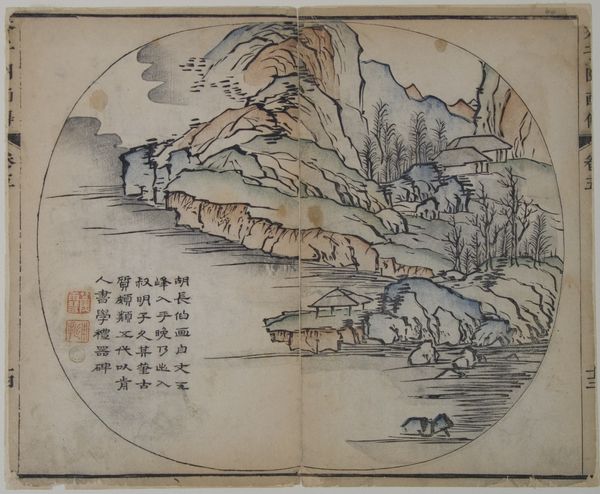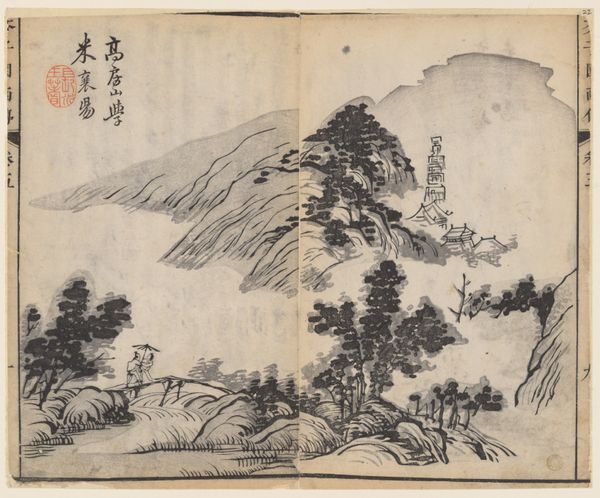
Illustrations of Various Professions (Shoshoku e-zukushi) 1685
0:00
0:00
drawing, paper, ink
#
drawing
#
asian-art
#
sketch book
#
landscape
#
ukiyo-e
#
house
#
paper
#
ink
#
yamato-e
Dimensions: 10 3/8 × 7 3/8 × 3/16 in. (26.4 × 18.7 × 0.5 cm)
Copyright: Public Domain
Editor: Here we have "Illustrations of Various Professions" by Hishikawa Moronobu, created around 1685. It’s an ink drawing on paper, displayed as an open book. I'm struck by the contrast between the detailed buildings and the more gestural rendering of the landscape. What stands out to you in this piece? Curator: What immediately grabs my attention is the use of ink and paper. Think about the societal context of artistic production here. Paper, at this time, wasn't merely a passive support but an actively negotiated resource. The way Moronobu manipulates ink—the layering, the varying pressures, creating light and shadow—reveals a deep understanding of the material’s properties. It's not just about depicting a scene; it's about showcasing a mastery of craft tied to labor and accessibility. Editor: So you’re seeing the work as evidence of the artist's skill with readily available materials? Curator: Precisely. Consider the book format itself. This wasn’t a large-scale commission destined for a palace. It suggests a deliberate choice towards accessibility and portability, likely for a burgeoning middle class eager for visual culture. Each stroke, each page becomes a conscious decision tied to production and, ultimately, consumption. Do you see any evidence of how the artist's work might address its intended consumer? Editor: Well, the "Illustrations of Various Professions" title suggests it’s meant to depict aspects of everyday life familiar to them, like landscape, dwellings, people… sort of like visual reportage. Curator: Yes, it becomes a curated selection of ‘everyday life’ experiences rendered through the skilled hand of Moronobu, which positions him in relationship with his intended customer, who may want access to representations of different activities. What I’m saying is that understanding how the materials and methods shaped both production and reception opens up deeper interpretations. Editor: I see your point! I hadn't considered how much the materials themselves contribute to the story the artwork tells. Thank you. Curator: Indeed. Looking at art through the lens of its production reveals so much about the culture it emerged from.
Comments
No comments
Be the first to comment and join the conversation on the ultimate creative platform.
